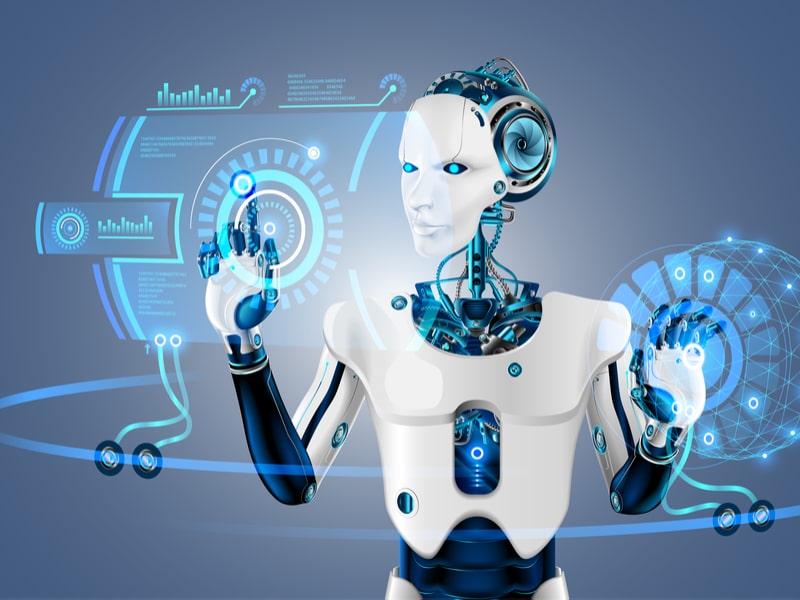Defining what a robot is is getting harder and harder. We are surrounded by more and more “smart” things with their own microprocessors, which fully correspond to the classical understanding of the robot.
However, it can hardly be called a “machine invasion”, which was written about by fiction writers of the middle of XX century. Approximately the same situation develops with the concept of “artificial intelligence”. If we perceive artificial intelligence in the way it is perceived by scientists, then AI has been among us for a long time now but it is still very very far away from the complexity of human thinking.
What should we understand by “robot” and “artificial intelligence”? For the solution of what problems resort to the help of robotic machines? Why instill emotions in machines?
What’s a robot?
What do we mean by “robot”? There are many definitions for this concept. A popular definition among my colleagues is: “A robot is a machine that perceives, thinks and acts. About ten years ago, the ability to communicate to these three characteristics and now many people say that the robot “perceives, thinks, acts and communicates”. Whether it’s good or bad, this definition makes us think of modern appliances (washing machines, etc.) as robots.

Robots for complex measurements in difficult conditions
With the evolution of technology, we have learned how to integrate microprocessors and small computers into tools, and the “plug and play” technology has emerged. This evolution allows us to use scientific tools remotely: attach them to moving robots and send them to places where they can make the necessary adjustments. Because no tool is universal, any of them must be adapted to a particular type of measurement.
In the past, changes and corrections have been made by the people who carry out these measurements. Now, with the automation of measuring instruments, with the introduction of artificial intelligence in them, they are better and better able to adapt to unforeseen circumstances and be able to provide us with the necessary information in these conditions.
Robots in search and rescue
What happens during the earthquake? After the main wave, most of the buildings collapse, and a search and rescue operation, consisting of teams of people and dogs, is sent to these buildings to find survivors.
There comes a wave of aftershocks, repeated earthquakes, and it can happen that the entire rescue team will be covered with collapsed debris. That’s why the Japanese have started researching search-and-rescue robots to replace humans. Now, instead of a man and a dog team or a group of people entering a dilapidated building, a robot controlled by a cameraman from a safe place comes in and starts to wander the building, looking for people.
Anthropomorphic robots
In 2006, I was at a conference on robotics in China and, passing by the exhibition hall, I saw two old men, one of whom was bored, gesticulating, telling the audience, the other bored, looking at the crowd with a slow look, looking at the newspaper and showing little interest in others. On the first pass, I quickly passed by without paying attention – well, there are two twins, dressed the same way. When I came back and stopped for a longer period of time, I realized that one of the old men was actually an anthropomorphic robot.
Emotional computing
We often make decisions under the influence of some emotional impulse. Without doing so, we do not use quick mechanisms to make decisions. What does this mean for robotics?
It means that robotic systems, or artificial intelligence systems, become unviable in the real world, where every time we go outside, we make a lot of spontaneous decisions. But there are no neurons inside the computer systems, and the reproduction of emotions today is associated with many difficulties.
Emotional artificial intelligence
What do you need to do to make the machine feel emotionally? And why reproduce the emotions inside the computer systems? If we try to reproduce emotions, we create machines that interact adequately in society, are able to help, are able to experience empathy, love, compassion, and then the full range of emotions that exist in our society, which is essential to reproduce and create the robotic agents that can help us in our daily lives.
Artificial Intelligence” has many explanations. One of the oldest is given by Allen Newell and Herbert Simon, two pioneers of research in this field, who wrote in 1975: “The task of intelligence is to prevent an exponential explosion in the search for a solution to the problem.
They meant that there are a huge number of interesting problems that make us exponentially explore a huge number of their potential solutions to find the one that will work if we apply the simple search method to them.
The best way to avoid this “explosion” of possible solutions is to choose your search strategy intelligently. From this point of view, artificial intelligence is the presence of such a strategy in the machine, most often in the computer or in the robot that is controlled by the computer.

